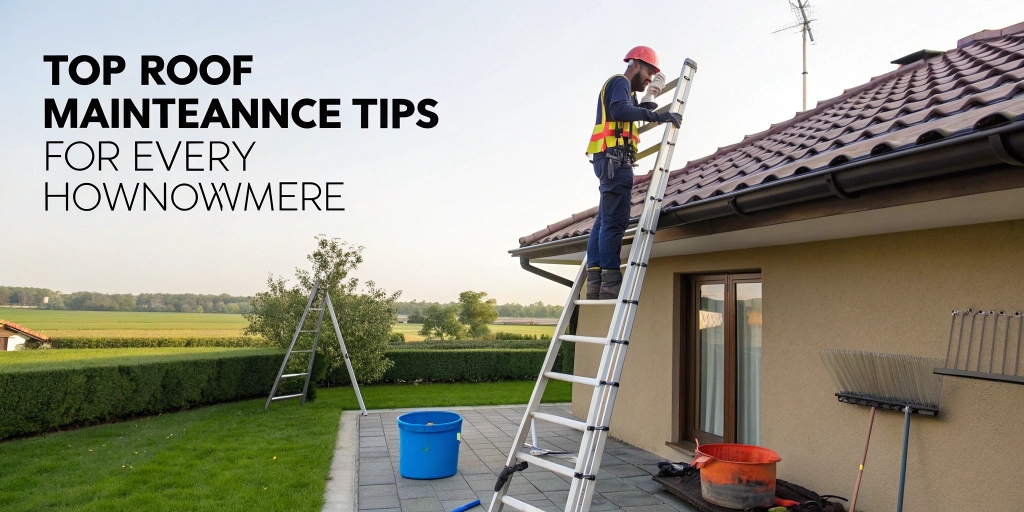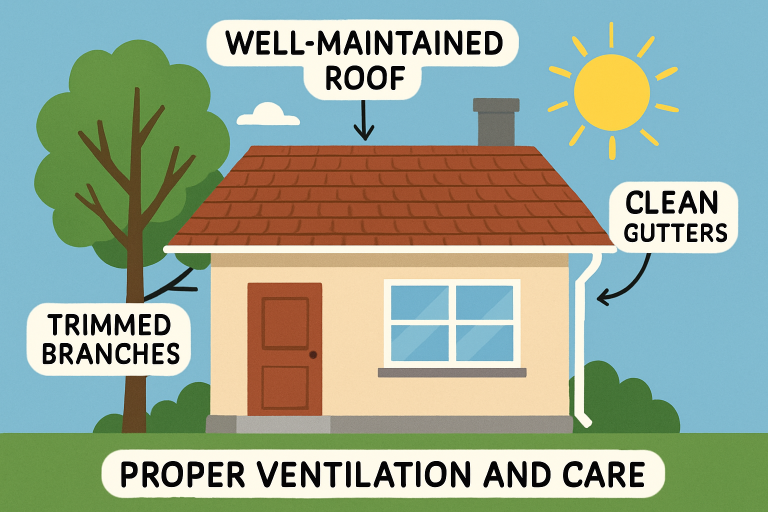
Top Roof Maintenance Tips for Every Homeowner
Key Takeaways
- Regular inspections help identify and address minor issues before they escalate into more significant problems.
- Keeping gutters clean prevents water damage and structural issues.
- Trimming overhanging branches reduces the risk of roof damage from falling debris.
- Addressing moss and algae growth preserves the integrity of roofing materials.
- Ensuring proper attic ventilation prevents moisture buildup and extends the life of the roof.
A well-maintained roof is crucial for protecting your home from harsh weather, preventing water damage, and ensuring long-term structural integrity. Many costly repairs can be prevented with regular upkeep and a proactive approach. Whether you’re a seasoned homeowner or new to caring for your property, understanding these key maintenance strategies can save you both time and money. If you’re concerned about the condition of your roof or considering an upgrade, check out this valuable resource on roof replacement Littleton for expert help in the Littleton area.
Simple measures, such as inspections and attic ventilation, can improve roof performance. Prevention is better than cure—small efforts today prevent bigger problems. Regular maintenance ensures your home’s security, increases its value, and maintains comfort. Following expert advice can extend roof life and reduce unexpected costs. Understand your roofing material and climate—different roofs need different care. Tailored plans prevent leaks and damage. Proper insulation and ventilation enhance energy efficiency, resulting in lower utility bills year-round.

Regular Inspections
Inspecting your roof at least twice a year—once in the spring and once in the autumn—can prevent serious damage from developing unnoticed. When checking your roof, look for missing, curling, or cracked shingles, damaged flashing, and areas where water may be pooling or leaking. Special attention should be paid following severe weather events or high winds, which may cause immediate or hidden damage. Addressing issues promptly preserves the integrity of your entire home and helps optimize your maintenance budget.
Clean Gutters
Clogged gutters can cause rainwater to overflow, resulting in roof leaks, foundation cracks, and even basement flooding. It’s crucial to keep your gutters and downspouts free of debris such as leaves and twigs, especially after autumn and spring. Cleaning gutters regularly ensures that water flows smoothly away from your home, reducing the risk of water-related damage. Additionally, gutter guards can be installed to minimize maintenance and prevent more significant issues.
Trim Overhanging Branches
Tree branches that hang over your roof can pose serious threats. Not only can falling branches break or puncture roofing materials, but leaves and limbs that settle on the roof also trap moisture, causing rot or mold. Trimming trees back from your roof not only protects the shingles but also prevents wildlife from accessing your attic or roof area. Regularly inspect the perimeter around your home and cut away limbs at least six feet from the roof surface.
Address Moss and Algae Growth
Moss and algae can quickly spread across shaded or damp parts of your roof, lifting shingles and accelerating the breakdown of roofing materials. Preventative measures include improving sunlight exposure and airflow by keeping trees trimmed and ensuring proper drainage. If you notice moss or dark streaks from algae, use a gentle cleaning solution and a soft brush, or consider hiring a professional roof cleaner. In areas prone to such growth, installing strips of zinc or copper along the roof ridge can help inhibit regrowth and keep the surface clean longer.
Ensure Proper Ventilation
Attic ventilation is crucial for maintaining a stable temperature and humidity level. Without it, condensation can accumulate, leading to mold, rot, and ice dams during colder months. Properly placed intake and exhaust vents help air move freely, maintaining a balanced attic climate and extending the life of your roofing system. Additionally, efficient ventilation helps maintain consistent indoor temperatures, which can result in lower annual heating and cooling costs.
Replace Damaged Shingles
Missing or broken shingles should be replaced immediately to prevent water seepage, which can compromise the roof underlayment and eventually lead to leaks inside your home. Keep a few spare shingles from your last roof installation, and match replacements to the existing style. Routine inspections make it easy to spot these problems early and address them before they escalate. Safety would be your priority—if you’re unsure, enlist a professional to ensure repairs are done correctly.
Schedule Professional Inspections
Even with vigilant homeowner inspections, certain problems—such as structural weaknesses, subtle leaks, or faulty flashing—may go unnoticed without a trained eye. Scheduling an annual inspection with a certified roofing contractor helps you catch these issues early. Professional assessments provide a comprehensive review, supporting proactive roof care, which is especially important before and after harsh seasonal changes. Not only does this maintain the structural integrity of your roof, but it can also help uphold warranty conditions on newer roofing systems.
Conclusion
Consistent roof maintenance is an investment in your home’s security, comfort, and value. By integrating essential tasks such as scheduled inspections, gutter cleaning, branch trimming, and professional assessments, you can extend your roof’s lifespan and avoid disruptive, expensive emergencies. Making roof care a routine home maintenance priority will help ensure your family stays safe and your property remains resilient, regardless of weather or age.

Average Rating